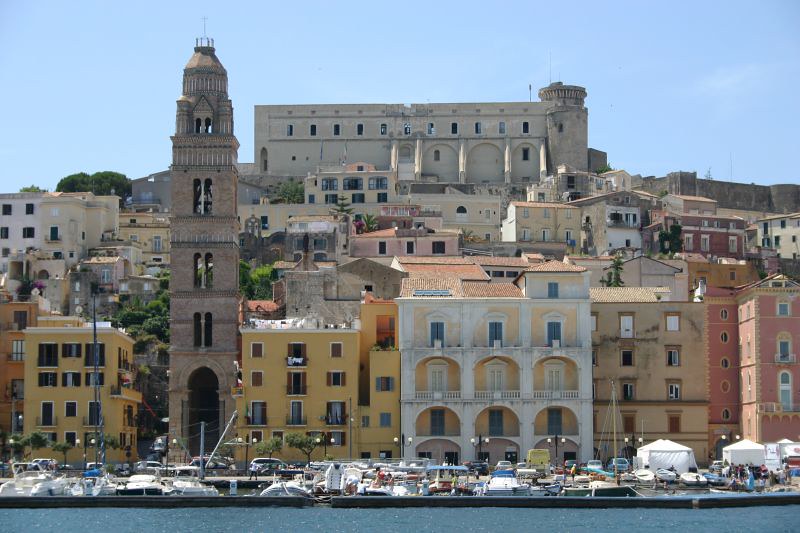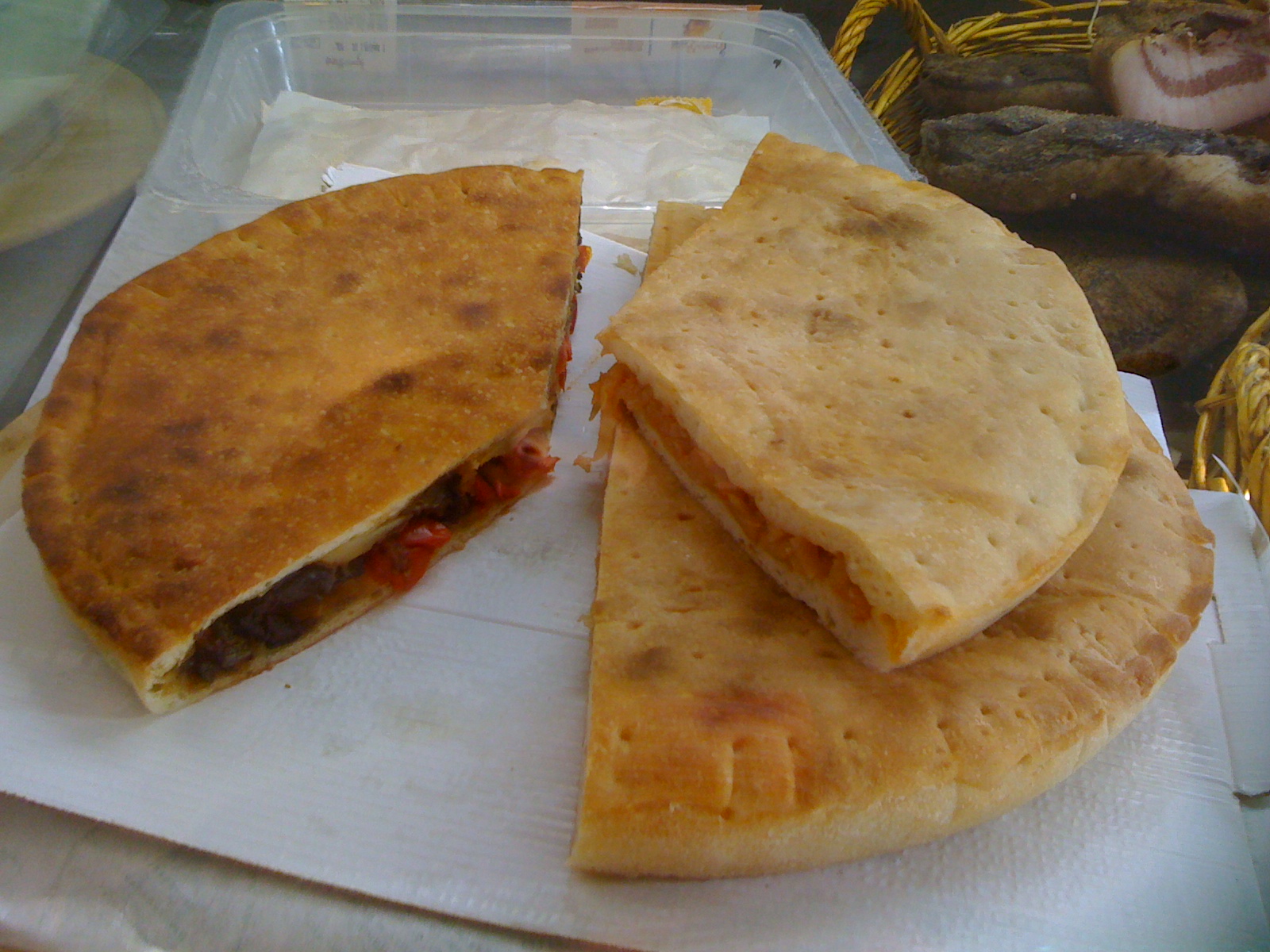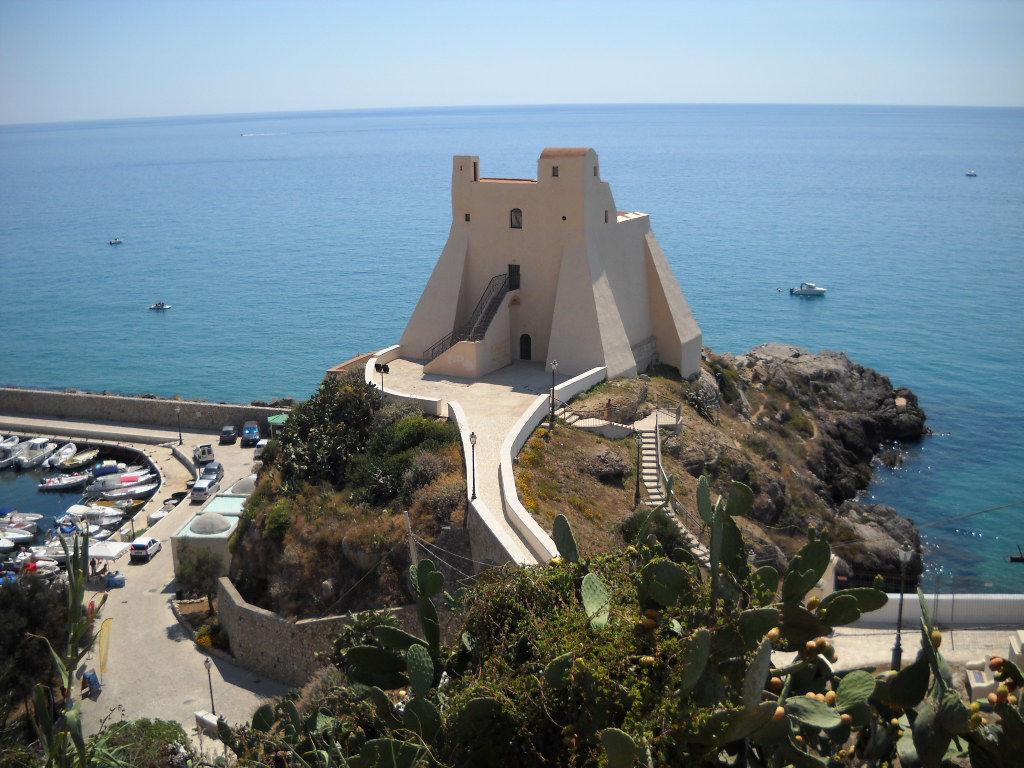In the coastal area between Rome and Naples, the most beautiful and evocative part is undoubtedly that which overlooks the Gulf of Gaeta. Crossed by the Appian Way, among the most renowned roads of Ancient Rome, the entire area possesses both a cultural and natural heritage of inestimable value.

An ideal starting point is the archaeological area of Minturno, just a few steps from the border between Lazio and Campania. The site preserves the striking ruins of the ancient city of Minturnae, which among its monuments boasts a theater in perfect condition that is still active today. But even the forum and the baths evoke the atmosphere of the imperial era, and in the immediate vicinity we have the suggestive remains of a typical Roman aqueduct.
Continuing west along the coast, after about 15 km we find Formia. This town, in addition to boasting the beautiful Spiaggia dei Sassolini (Pebble Beach), where we have crystal-clear water, is where we can find Cicero’s Tomb, a cone-shaped mausoleum of the celebrated orator known to be among the greatest intellectuals of Ancient Rome, and the Roman Cisternone, which supplied water to the locals, a unique testimony of ancient hydraulic engineering that enchants visitors with its striking architecture and effects of light and shadow.

Leaving Formia, after a few kilometers we come across the picturesque Gaeta, a town that gives its name to the gulf along which it lies. Called the city of a hundred churches, it was among the favorite vacation spots of the emperors and nobles of ancient Rome, and today its historic center, dominated by the imposing profile of the Angevin-Aragonese Castle, is a beautiful maze of alleys in which to wander, and even get lost. What most strikes the eye are the Temple of San Francesco (the patron saint of the city) and the original cathedral bell tower–the campanile–a mixture of several artistic styles, which determine its urban profile. To add to such beauty we have La Montagna Spaccata—the shattered mountain— so called because of its clefts in the rock (according to legend caused by the rending of the veil of the Temple of Jerusalem after the Death of Jesus) where there is a shrine on one of its slopes; and the Grotta del Turco, an evocative gorge that could once be reached by climbing 300 steps, reduced to 60 for safety reasons.
Continuing westward we arrive in fairy-tale Sperlonga, a dazzlingly white seaside village where it’s worth getting lost in its maze of small squares and its many ups and downs; the enchanting Torre Truglia drawing us in as we were part of a painting.

Equally amazing is the Grotto of Tiberius, a cavity where the cruel emperor–who is said to have flung his enemies and irritating slaves off the nearby cliffs–built a villa. The remarkable ruins remain, and they offer a unique view of the sea and the surrounding landscape.
Finally, still going in the same direction, as an ideal conclusion to the itinerary, about twenty kilometers from Sperlonga, we have the town of Terracina. One of its most symbolic places is the Roman Temple of Jupiter Anxur, which dominates the top of Mount Sant’Angelo and whose ruins give us a sense of the importance it had as a sanctuary in antiquity; but the historic center also amazes with its alternation of ancient ruins-like the forum complex–with medieval buildings, like some tower-houses, both evidence of a long and rich past.

Among the culinary classics of the area is the Tiella di Gaeta, a stuffed pizza, that like most local dishes, fuses flavors from both the land and sea. While octopus abound in the gulf, the surrounding countryside teems with olives, tomatoes, zucchini, onions, and escarole. These local ingredients are stuffed inside the double-layered tiella that is a street food that’s normally enjoyed by the slice.












